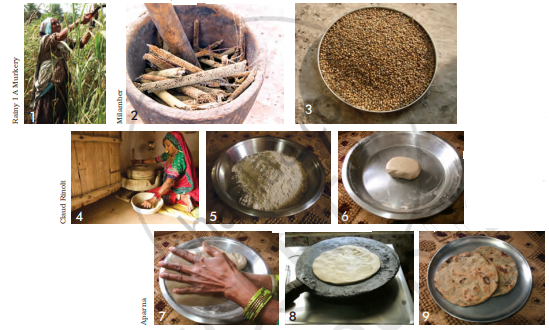Advertisements
Advertisements
Question
What can happen to Hasmukh’s farm after some years?
Solution
Hasmukh’s farm will lose fertility after some years because Hasmukh is using chemical fertilizers. Hasmukh is in danger of falling into a debt trap as he has taken loans to buy tractors, seeds, and fertilizers. In the future, he may not be able to properly work on his farm.
APPEARS IN
RELATED QUESTIONS
In your house what is done to protect grains and pulses from insects?
Talk to the elders in your family and find out if there were some special foods cooked earlier that are not cooked anymore?
Find out about the crops - cereals, vegetables, pulses - that are grown in your area. Of those, is there anything that is famous across the country?
Damjibhai’s son Hasmukh chose to become a farmer like his father. Hasmukh’s son Paresh is not a farmer, but a truck driver. Why would he have done so?
What questions come to your mind about farmers and farming? Write some questions in your group and ask a farmer. For example, how many crops do they grow in a year? Which crop needs how much water?
Visit a farm near your area. Observe and talk to the people there. Write a report.
What can you see in each picture on the next page?
In picture 2 you can see the bajra cobs in the mortar (okhli, used for crushing). The cobs are crushed with a pestle (moosli) and the seeds are separated from the cob. You can see the separated seeds in picture 3. Now this work is also done by big machines, like threshers. We call both these different ‘technologies’ – using our hands or big machines – to crush the seeds.
What technology could have been used to cut the stem in picture 1? What do you think is being done in the grinder (chakki ) in picture 4? What ways (technologies) would have been used to do the work shown in pictures 5 and 6? You can see that the dough is ready in picture 6. When do you think a sieve (chhalni ) would have been used? Discuss each step in detail, in any language you wish to use.

There have been many changes over time, in our food. What can this mean? Use the seed story and what you know from your elders to explain.
What technology could have been used to cut the stem in picture 1?
What do you think is being done in the grinder (chakki) in picture 4?
